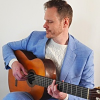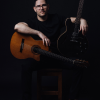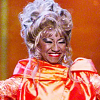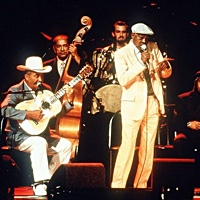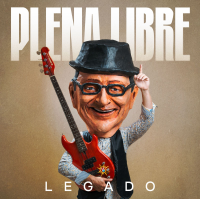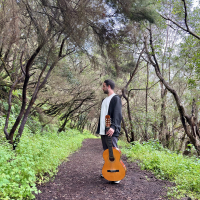Home » Jazz Musicians » Buena Vista Social Club
Buena Vista Social Club
Ry Cooder
Ry Cooder launched a successful solo recording career in the early 1970s, with a string of well-received albums featuring his unique blues-flavored slide guitar. Over the years he has delved into such diverse influences as Gospel, Hawaiian slack-key, and Tex-Mex.
As a session guitarist, Cooder has worked with The Rolling Stones, Neil Young, Randy Newman, Van Morrison, and Johnny Cash. Cooder composed his first score for The Long Riders in 1980, followed by films like Southern Comfort, The Border, Streets of Fire, Crossroads, and the widely lauded Paris, Texas. In 1992, Cooder worked with Walter Hill on the gritty urban drama Trespass before re-teaming with Hill in 1993 for Geronimo: An American Legend and again in 1996 for Last Man Standing, starring Bruce Willis. Tim Robbins recruited Cooder to produce tracks with Eddie Vedder and Nusrat Fateh Ali Khan and with Johnny Cash for the critically acclaimed Dead Man Walking.
Cooder has always been something of a musical traveler, having devoted most of his career to an exploration of different areas and aspects of music. This is especially evident on albums like Paradise & Lunch, Bop Till You Drop, and Borderline.
Cooder remains one of today's most intriguing recording artists. In 1990, he joined John Hiatt, Nick Lowe, and Jim Keltner in the band Little Village, and later released the Grammy Award-winning Meeting by the River, a duo album with Vishwa Mohan Bhatt, a virtuoso guitarist from the North Indian state of Rajastan. In 1995, he won a second World Music Album Grammy for his recording Talking Timbuktu, with Malian guitarist Ali Farka Toure. He has since released his "California trilogy" of albums for Nonesuch Records: Chavez Ravine (2005), My Name Is Buddy (2007), and I, Flathead (2008).
"It's nice to have one thing feed into the other," says Cooder of his diverse career. "I do one project here and apply it over there. It's all a great education."
Compay Segundo (1907-2003)
Ninety years young at the release of Buena Vista Social Club, Compay Segundo was the ultimate living legend, a vital link with Cuba's musical history and still making music full of passion, wit, and energy.
He was born Francisco Repilado in Siboney, Cuba, on the mountainous east side of the island and grew up in Santiago, the cradle of son. By the 1920s, he was already a fine guitar and tres player and would work in the tobacco fields and as a barber by day, before heading for the local bars by night to play with the likes of Sindo Garay and Nico Saquito. At the age of 15, he wrote "Yo Vengo Aqui," the first of hundreds of compositions. Compay also studied clarinet, and by the time he was 20, he was the clarinetist in the Municipal Band of Santiago, led by his teacher Enrique Bueno.
Read moreTags
Buena Vista Social Club At Carnegie Hall

by Nenad Georgievski
Buena Vista Social Club Buena Vista Social Club at Carnegie Hall World Circuit 2008
There is an old joke about a young man walking the streets of New York City with a violin case under his arm. After failing to find the address he's looking for, he stops and asks the first person he sees for directions. “How do I get to Carnegie Hall?" he inquires. Without blinking an eye, the other man replies, ...
Continue ReadingCuban Pianist Dayramir Gonzalez - Van Van Discussion On Dec. 3 At Ideal Glass Studios - Performing Buena Vista Social Club Tribute on Dec. 5 At Chelsea Table + Stage

Source:
Scott Thompson Public Relations
PIANO PHENOM DAYRAMIR GONZÁLEZ Launching the Official Van Van Project Friday, December 3rd-6pm Ideal Glass Studios 9 W. 8th St. New York, NY 10001 Ideal Glass Studios was, and still is, a place for all to transcend the norm and exist in a space where alternative modes of thought and expression are encouraged and celebrated. The Presentation will include 5-6 songs of the Concert, a Q&A followed by a short piano solo set. Doors Open at 6pm. ...
read more
Buena Vista Social Club - At Carnegie Hall (2008)

Source:
Something Else!
By Nick DeRiso There is an uncommon nostalgia associated with this concert recording, and not just because of the lost history shared amongst these aging former Cuban stars. Alas, Buena Vista Social Club at Carnegie Hall wasn't released until after many of the original group had already passed. Yet, it still plays like a kinetic burst of light, with these spicy instrumental flourishes unheard on the group's original self-titled studio release and an enduring life-affirming passion for one another, their ...
read more
Orlando "Cachaito" Lopez, Who Provided the Bass Line for the Buena Vista Social Club, Died Monday at 76.

Source:
All About Jazz
HAVANA Orlando “Cachaito" Lopez, considered the “heartbeat" of Cuba's legendary Buena Vista Social Club for his internationally acclaimed bass playing, died Monday of complications from prostate surgery, fellow musicians said. He was 76.
Lopez, a founding member of the band brought together in the 1990s by American guitarist and producer Ry Cooder, died in a Havana hospital several days after surgery, said Manuel Galban, a Cuban musician who played with Lopez for decades.
“We have lost a great companion," said ...
read more
World Circuit/Nonesuch Records Release "Buena Vista Social Club at Carnegie Hall"

Source:
All About Jazz
Double-Disc Recording Of Historic 1998 Concert Available Now “In 1998, the aging members of this Cuban collective realized a lifelong dream: playing to a sold-out audience at Carnegie Hall. That show, captured on this two-disc set, is even more emotionally engaging than the group’s eponymous album, which triggered a worldwide Latin-jazz revival. ****1/2 [out of five]" --Rolling Stone “The recording is immaculate, the performance breathtaking." --Billboard Buena Vista Social Club, the Grammy Award–winning 1997 World Circuit/Nonesuch Records album produced by ...
read more


